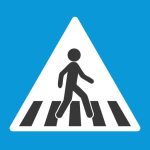Cognitive Behavioral Therapy and Stress Management

Stress is the origin of the impulse to addiction. Stress comes from the inability to quickly resolve a situation in a favorable manner. Some examples of known stressors:
- pain
- danger
- confinement
- hunger
- thirst
- boredom
- setbacks
- mistakes
When the desire for a different outcome meets the reality of the present situation, it leads to displacement. Since you can’t immediately solve the problem, you block it out by overeating, binge drinking, compulsively shopping, playing video games, using prescription drugs, using illegal drugs, and other compulsive behaviors.
Or you can pursue a different path and consult with a therapist, psychologist or psychiatrist and study cognitive behavioral therapy (CBT) and stress management techniques. What, exactly, is included in CBT, and how is it different from stress management?
Cognitive Behavioral Therapy (CBT)
CBT begins with the identification of “destructive or disturbing thought patterns that have a negative influence on behavior and emotions,” according to the National Institutes of Health. Cognitive therapy — changing one’s thoughts — and behavioral therapy — changing one’s actions, were blended together in the 1950s and 1960s to form CBT, which encompasses a wide variety of therapies, including:
- acceptance and commitment therapy
- dialectical behavior therapy
- mindfulness-based cognitive therapy
- functional analytic psychotherapy
- extended behavioral activation
- exposure therapy
A paper reviewing 345 scientific studies of CBT came to some impressive conclusions that illustrate the mind/body connection. CBT is effective for chronic low-back pain, fibromyalgia pain, chronic fatigue syndrome, irritable bowel syndrome, and tinnitus.
CBT was also effective at treating behavioral disorders, including panic disorder, post-traumatic stress disorder (PTSD), attention deficit hyperactivity disorder (ADHD), social anxiety disorder, and bulimia nervosa. It is also effective against anxiety and depression.
Finally, by identifying problem ways of thinking and reacting to stress, CBT has been shown to be effective against addictions, including smoking, benzodiazepine use, eating addiction, gambling addiction, and other obsessive-compulsive disorders including self-harm.
Stress Management Techniques
Stress management techniques are what you use when CBT identifies a stressful situation that was previously handled poorly by displacing the stressful energy into self-harming activities, such as drug abuse or binge eating. Stress management techniques are improved ways of dealing with a moment of crisis.
The simplest stress management techniques are often the best, because they are easily remembered and simple to use. They include:
- holding the breath
- deep breathing
- breath counting
- counting to 10
- lip or tongue biting (not too hard)
- scratching
- blinking
- playing with the hair
These simple displacement activities help dissipate stressful energy and make it easier to ride urges and cravings that come from withdrawal. The next level of stress management involves relaxing the body through exercise. This can be as simple as isometric exercises, such as hand squeezing, or any sort of physical activity, including sports, yoga, walking, stairs, calisthenics, etc.
The National Institute of Mental Health offers an interesting set of ways to cope with stress:
- Keep a journal.
- Download an app with relaxation exercises.
- Exercise and eat healthy.
- Get regular sleep.
- Avoid excess caffeine.
- Identify and challenge your negative thoughts.
- Reach out to friends and family.
Stress management begins with a realistic assessment that everyone has to deal with stressful situations: they are part of life. The best method of stress management is to remove all the stressors. If you can’t do that (and no one can, though you can remove many of them), the next best thing is to develop strategies for dealing with stress when it inevitably arrives.
The next best thing after that is to track your choices. You don’t have to get it right every time, but if you track your choices, you’ll find you consistently do better. You develop better strategies over time, and you track the improvement. That study of 345 scientific papers on CBT found that:
Mental and physical problems can likely be managed effectively with online CBT or self-help CBT using a mobile app…
Once you study CBT and learn to identify traps in your thought patterns regarding coping with stress, and you develop stress management techniques that work well over time, you will be able to maintain this self-help routine with smartphone apps. That is the magic of decades of CBT and stress management techniques cooked down into an elegant smartphone app.
Written by Steve O’Keefe. First published October 8, 2025.
Sources:
“Cognitive-behavioral therapy for management of mental health and stress-related disorders: Recent advances in techniques and technologies,” BioPsychoSocial Medicine, October 3, 2021.
“Stress: What It Is, Symptoms, Management & Prevention,” The Cleveland Clinic, May 15, 2024.
“I’m So Stressed Out! Infographic,” National Institute of Mental Health, retrieved September 30, 2025.
Image Copyright: prinsproduction.




